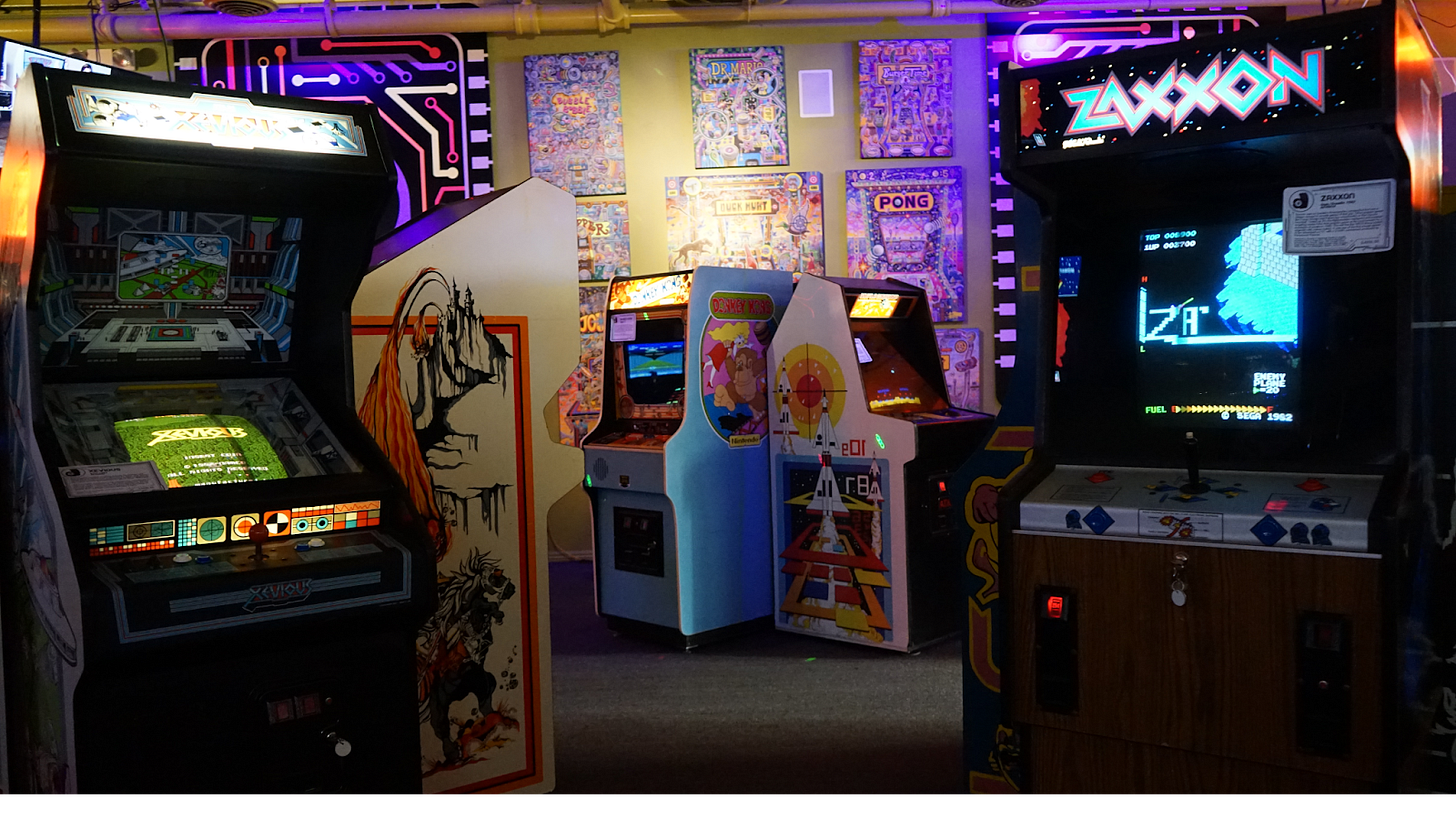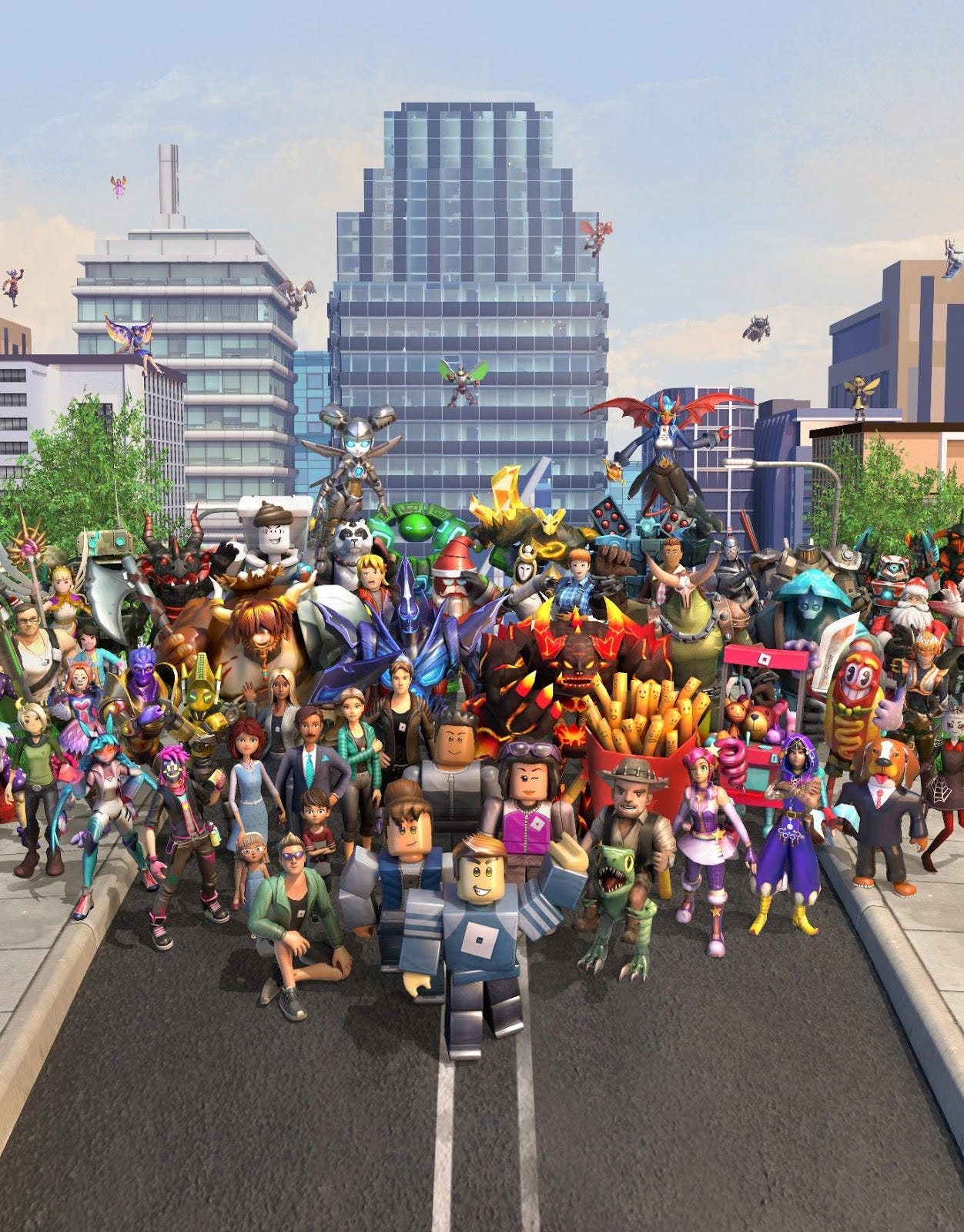As an FYI, we will use the term "NFT games" throughout this article. NFTs have recently entered mainstream consciousness, and the term is easier to understand than blockchain games.
Why video games?
So why are we talking about video games at all? Because they are the most obvious gateway into the metaverse. While traditional games like Roblox and Fortnite don't fit our characterisation of the metaverse, NFT games are much closer to it. They exhibit things like ownership, identity, and financial value while preserving the self-sovereignty of the players.
In our intro post, we also talk about metaverse as the future of work. The first sign of that is the emergence of play-to-earn games as a viable economic model, particularly in the frontier and emerging countries.
Lastly, drawing parallels between the incumbent gaming companies and their NFT-based disruptors allows us to build mental models around valuations for the NFT games. If Roblox is valued at $43 billion, how much should investors pay for Axie Infinity, for example?
Evolution - 1970s to today
Video games have been in our society for many decades. From early console and arcade games of the 1970s to the rise of mobile games in the 2000s, gaming went from a $12.7bn industry in 1991 to $167.9bn in 2020. It will continue to grow too, projected to exceed $287bn by 2026.
One of the fascinating dynamics in gaming has been the evolution of the business model. With arcade games, we had the pay-per-use revenue model. Then, in the 1980s, the model shifted to pay-per-copy. Once you bought a copy of a game, it didn't matter if you played 1 hour or 100 hours. During this period, games were sold offline through retail outlets and revenue was generated upfront with limited monetisation beyond the initial sale.
In the late 1990s, distribution began to shift from brick and mortar to digital. However, it wasn't until 2014 that digital sales first overtook retail distribution, making up 52% of all sales. It became easier to build and distribute video games which led to the rise of free-to-play. This led to the evolution of the business model from pay-per-copy to subscriptions, followed by microtransactions and downloadable content (DLC) in the early 2000s. In the 2010s, games began to experiment with loot boxes and season/battle passes to drive ongoing revenue and increase its stickiness.
Today, the most prominent games generate nearly all of their revenue from ongoing transactions instead of an up-front payment. For example, a game like Roblox, with 200 million monthly active users (MAUs), generates most of its revenue through the sales of its in-game currency, Robux.
"We generate substantially all of our revenue through the sales of Robux to users. Users can spend Robux to purchase access to experiences, enhancements in experiences, and items in the Avatar Marketplace. Robux are available as one-time purchases or monthly subscriptions." -Roblox S-1 filing
This evolution in the business model means that the financial success of a game now depends on ongoing engagement. And excellent graphics, characters and storylines are not enough. First and foremost, games have to be fun. They have to be social, and they need network effects. Minecraft and Roblox look like they were developed in the early 2000s. Yet, they have close to 350 million MAUs combined.
Analysing the incumbents
To understand the benefits and the potential of NFT games, we first need to take a closer look at the incumbents like Roblox, Fortnite and Minecraft.
Roblox
Roblox is a game creation platform powered by user-generated content (UGC). Through Roblox Studio, it gives developers the tools to build and publish experiences and content for the Roblox virtual world. Anyone can then experience that content by using Roblox Client.
Roblox is quite popular. Their platform has over 18 million experiences, boasts 43.3m daily active users (DAUs) and 200m MAUs. It has benefited significantly from Covid-19. Around 60% of its users are under 13 years old, and lockdowns meant more time spent gaming.
Roblox flywheel centres around UGC. High-quality content attracts more users to the platform and drives engagement. Engagement then leads to more Robux, the in-game currency for the platform, being spent, which eventually finds its way to the developers.
Despite its popularity, Roblox is still losing money. In Q1 2021, Roblox Corp reported a net loss of $130m despite $387m in revenues. And while revenues are growing, up 140% over Q1 2020, so are the losses. The major expense items for Roblox are third-party payment processing fees that they pay to the likes of the App Store, developer exchange fees and infrastructure costs. There are other costs, like personnel costs for its 1,054 employees. While Roblox doesn't have any earnings, the market seems to appreciate its vision and the top-line growth, valuing the company at $42 billion at the time of writing. This is up from $2.5 billion in 2018 before Roblox went public.
Fortnite
Fortnite is, in some ways, similar to Roblox. Although as part of Epic Games, its financials as a standalone business are hard to estimate. We do know, though, that over 2018 and 2019, Fortnite brought in $9 billion in revenue for Epic. In April, Epic Games raised $1 billion at a valuation of $28.7 billion.
Fortnite's MAUs are lower than Roblox or Minecraft, at around 80 million, compared to 200 million and 140 million, respectively. At the same time, users spend approximately 50% more time in Fortnite. It also holds the record for peak concurrent users, at 12 million, triple the 4 million that participate in Roblox live events. Much of this success comes from Fortnite's role as a social hub with its Creative Mode, Party Island and events like the Marshmello and Travis Scott concerts.
Traditional games vs NFT games
We believe that NFT games are superior to traditional games in almost every way. In fact, their only disadvantage at the moment is the quality. However, as we mentioned above, successful games are about fun, social experiences and network effects, not necessarily quality.
And the quality gap is closing. There are two main game engines for building games, Unreal from Epic Games and Unity from Unity Technologies. Enjin platform, for example, has software development kits (SDKs) available for the Unity engine, and my understanding is that Unreal is being worked on as well. And the Sandbox game developed its custom Voxel Engine on top of the Unity engine. So the tooling is getting there. We tend to agree with Kieran, one of the founders of Illuvium, once quality catches up, it's truly game over.

So let's talk about some of the advantages of NFT games. We'll use Roblox as an example. As a publicly-traded company, it's much more transparent than Fortnite or Minecraft.
Economics
Roblox hasn't made money since the company was founded in 2004. It has 1,054 employees - that's about 23% of revenue. It pays roughly 25% of its revenue to payment processors, 30% to developers and 17% for infrastructure. There are other costs as well. When the equity market ceases to be distorted by unlimited liquidity and zero rates, this will no longer be a sustainable business model.
NFT games have very different economics. The headcount is much lower. Illuvium has about 40-50 people working on it. Sky Mavis, the core team behind Axie Infinity, has 30 and Sandbox is at about 100. There are no payment processors – the blockchain handles that part. Developers and creatives monetise directly, keeping close to 100% of profits. At the same time, protocols make money on fees from primary and secondary sales on their marketplaces, things like breeding fees in Axie Infinity or land sales and potentially ads.
Fundamentally, NFT games have a better business model. Well designed token economics allow NFT game protocols to bootstrap adoption by incentivising both players and developers. Protocols make money on the activity between those parties, with significantly lower costs and overhead. Everyone wins.
Ownership
Another interesting difference is economic ownership. Roblox, for example, compensates developers with Robux, its own currency. Roblox Corporation sets the rate at which Robux can be redeemed for fiat and can change it at "its sole discretion". The last time I checked, the exchange rate was 1 Robux to $0.0035.
As a side note, Roblox makes almost all of its money on selling Robux to users. In the S-1, they said that the "average price for a Robux for the nine months ended September 30, 2020 was $0.01". That's about 2.85x what Roblox pays developers for their Robux.
Robux is simply an in-game currency. It has no claim on profits of Roblox Corporation and no voting rights. So there is always going to be tension between shareholders and developers. Compare that to NFT games, where developers get better terms on compensation and own the upside in the game's success. They also have a say in the development of that game via voting rights.
There is also ownership of the in-game assets. NFTs allow for authenticated ownership of digital goods. From a player's perspective, it turns in-game assets from a purely casual purchase into an investment. NFTs allow thriving in-game economies in the public sphere, not in grey markets. And thriving economies attract more users and developers and generate revenues for the NFT gaming protocols. That's the same flywheel as Roblox but with much better aligned financial incentives.
NFTs also enable one of the most powerful concepts in NFT gaming – play-to-earn. With most population growth occurring in the frontier and emerging economies across Asia, Africa and South America, play-to-earn will be huge. It's also interesting that this market is relatively untapped by the incumbents. For example, the US, Canada and Europe make up about 60% of Roblox's DAUs and an even bigger share of bookings. Play-to-earn will activate those younger and growing populations in emerging countries.


Valuations - bringing it all together
The last question remaining is what does all this mean for valuations of the NFT gaming protocols? Axie Infinity, for example, has a fully diluted valuation of $1.2 billion, while Sandbox is valued at $800 million. Are these valuations fair on a relative basis?
We believe that the valuation gap between traditional gaming companies and NFT gaming protocols will narrow considerably over the medium term.
Axie Infinity currently has about 50,000 DAUs, up more than 50% in less than one month following migration to its own Ethereum sidechain, Ronin. Over the last 30 days, trading volume on the Axie marketplace was $16.8m, up about 160%. The protocol charges a 4.25% fee on marketplace transactions. Since the Ronin migration on April 28, the protocol generated 191 ETH from marketplace fees or about 3,000 ETH annualised. Breeding fees over the same period netted 88,500 AXS, or 1.5m AXS annualised. Even at current prices, that's close to $15m in annual revenue and growing. The breeding fee was just increased from 1 AXS to 2 AXS, potentially adding another 1.5m AXS to the Treasury.


As hard as it is to comprehend, Axie is already more profitable than Roblox. Value accrual in a token-based model is essential, and token economics for AXS are well suited to capturing that value. We believe that play-to-earn dynamics will continue driving significant growth in DAUs and marketplace activity, leading to a higher valuation.
Sandbox is a bit harder to analyse given the game is not live yet. However, we know that the off-chain game generated 40 million downloads and, at its peak, had around 2.6m MAUs.
When it comes to the game itself, Sandbox is much closer to Roblox than Axie. It has a similar set of tools with Voxel Editor, Marketplace and the Game Maker for developers. Given the superior incentive structures and play-to-earn mechanics, it's feasible that Sandbox will capture some activity, and therefore value, from both Roblox and Minecraft. Economic capture for the SAND token comes from marketplace fees, set at 5% of transaction size. Given the open and transparent in-game economies, if Sandbox reaches anywhere near its off-chain MAUs, the SAND token should accrue significant value.
Summary
To sum things up, we see a high probability that NFT games will meaningfully narrow the valuation gap with traditional gaming companies over the medium term. Furthermore, play-to-earn dynamics will bring in an entirely new cohort of gamers. As the adoption of NFT games improves, driven by play-to-earn, developers will follow due to better alignment of incentives. When AAA studios come in, the quality of NFT games will improve, prompting yet another round of user growth. It's challenging to see traditional games competing over the long term due to inferior business models and disadvantages of centralised systems more broadly.
This means that even at current valuations, tokens like AXS and SAND are good medium-term to long-term investments. We believe that other tokens in the gaming ecosystem will also benefit as the rising tide of user adoption lifts all boats.
There are some risks, of course. The ability of teams to execute, scaling difficulties leading to high barriers to entry and inadequate value capture, just to name a few. But the risk-reward is asymmetric in our view and worth taking.








My two thoughts are: I must be a long time out of gaming, and why is this space not huge already?!
Fantastic write-up